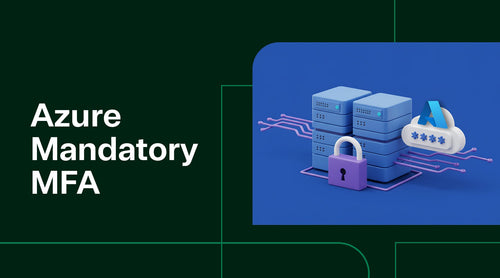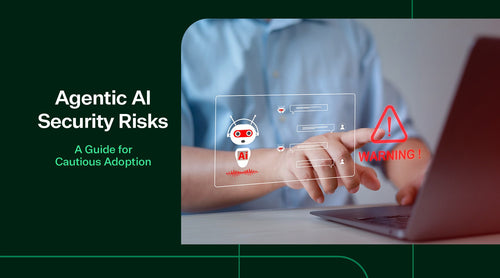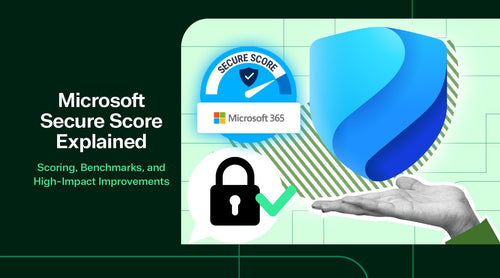Microsoft is expanding its mandatory multi-factor authentication (MFA) requirements for Azure. Starting October 1, 2025, “Phase 2” of Azure’s MFA enforcement begins. This means all Azure resource users, whether through the web portal, command-line tools, or APIs, must verify their identity with MFA. The change is part of Microsoft’s ongoing effort to strengthen cloud security in response to increasing cyber threats.
Key Points
- What’s Changing: MFA will now be required for all Azure resource management actions, including portal logins, CLI, PowerShell, APIs, SDKs, and automation tools.
- Who’s Affected: All human users managing Azure resources. Service accounts and managed identities are exempt.
- Why It Matters: MFA prevents over 99% of account compromise attacks, and this rollout enhances security throughout the Azure ecosystem.
- What to Do: Ensure all Azure users have MFA enabled and update the CLI/PowerShell tools to the latest versions.
- CSP Impact: Cloud Solution Providers should review automation scripts, help clients with MFA setup, and prepare for higher support demands.
What Phase 2 Entails
Phase 2 expands MFA requirements beyond the Azure Portal to include every method of managing Azure resources. In Phase 1, rolled out from late 2024 to early 2025, Azure enforced MFA for sign-ins to web management interfaces such as the Azure Portal, Microsoft Entra admin center, and Intune admin center. Phase 2 will gradually mandate MFA for any Azure resource management operations conducted through other channels. This includes the Azure CLI, Azure PowerShell, the Azure mobile app, REST APIs, SDKs, and Infrastructure-as-Code (IaC) tools. In practical terms, if you or your team use scripts or developer tools to deploy or modify Azure resources, you will be prompted for MFA verification during those actions. Read-only actions may not trigger MFA, but any creation or modification will.
Microsoft will gradually roll out Phase 2 across all Azure tenants after the October 1 start date. Administrators of Azure tenants have been notified via email and Azure Service Health alerts. If an organization cannot enable MFA by the deadline, the tenant’s global administrator can request a temporary postponement of enforcement through the Azure Portal. However, the expectation remains that all users will swiftly comply.
Notably, service accounts and automated workloads are exempt from this requirement. The MFA mandate applies only to human user accounts. Automated processes running under managed identities or service principals (Azure’s non-human accounts) will not be required to perform MFA. This means well-architected automation using service identities should continue to operate smoothly. However, if any automation currently uses a regular user’s credentials, that process will begin to fail once MFA is enforced. Microsoft strongly recommends migrating such scripts to use service principals or managed identities to prevent disruptions.

Why Microsoft Is Enforcing MFA
Microsoft is making MFA mandatory to enhance security for Azure clients significantly. The company’s research indicates that multi-factor authentication can prevent over 99% of account compromise attacks. As cyberattacks grow more frequent and advanced, a single password no longer provides sufficient protection. Requiring an additional verification step, such as an authenticator app code or biometric scan, for each login greatly lowers the chance of unauthorized access, even if passwords are leaked or guessed.
By implementing MFA across Azure, Microsoft aims to prevent account takeovers, data breaches, and misuse of cloud resources. The phased rollout was created to give organizations time to adopt MFA without causing sudden disruption. Phase 1 introduced improved security for graphical management logins. Phase 2 now addresses the remaining gaps by including command-line and programmatic access. Any way to access Azure will have the same strong authentication standards.
What Users and Organizations Should Expect
Azure users and organizations should prepare for stricter sign-in procedures when managing cloud resources. After Phase 2 kicks in, attempting to perform Azure management tasks without MFA will be blocked. Each user account will need an MFA method (such as Microsoft Authenticator app, SMS code, or hardware key) registered and ready.
Organizations should ensure all their Azure administrators and DevOps personnel have MFA enabled on their accounts by October. This might involve verifying user MFA setups and possibly rolling out authentication apps or keys to any staff not using them. Organizations can expect communications from Microsoft (emails, portal notifications) about the enforcement schedule and guidance on preparation. Microsoft has provided Azure Policy definitions and Conditional Access policy recommendations to test and enforce MFA in advance. By applying these in “report-only” or audit mode, admins can gauge who would be blocked and address issues before the rigid enforcement hits.

Impact on Your Cloud Solution Provider (CSP)
Cloud Solution Providers (CSPs) - companies that manage your Azure services need to pay special attention to this MFA mandate. Since CSPs often have administrative access to many customer environments, Phase 2 enforcement will intersect with their daily operations and client management workflows.
Operational impact: CSP staff who use automation and scripting to manage client Azure resources must ensure their processes accommodate MFA. Many CSPs likely already require MFA for their employees (as part of Microsoft’s existing partner security requirements). Still, any cross-tenant Azure management via CLI, scripts, or APIs will also prompt MFA. Your CSP operations teams should audit their tools and scripts. If any automation runs under a human account context (for example, a support engineer’s login), those need to be reworked to use service principal credentials or other non-interactive methods. Internal runbooks may require updates to include steps for MFA when performing specific tasks.
Customer onboarding: CSPs should incorporate MFA setup as a mandatory step for new Azure customers. When provisioning your Azure tenancy or subscriptions, CSPs will want to ensure that global admins and key user accounts are configured with MFA from day one. This might involve educating you on using authenticator apps or providing guidance on Azure’s MFA registration process. By doing this at onboarding, CSPs help their customers avoid interruptions later when Phase 2 enforcement reaches them.
Support practices: In the support realm, CSPs may receive more queries from customers as MFA enforcement ramps up. There may be login issues or deployment pipeline failures if they haven’t prepared for MFA, and they will turn to their CSP partners for help. CSP support teams should be ready to troubleshoot MFA-related issues, for instance, guiding a customer admin through setting up an MFA device, or explaining why a script now fails and how to fix it (likely by using a service principal or updating to a newer tool version). Proactively, CSPs might run workshops or send out client advisories about the upcoming changes, so that clients are not caught off guard.
Customer management at scale: CSPs managing many client tenants will have to track MFA compliance across all of them. Creating an internal dashboard or report indicating which customer accounts have MFA enabled and which might need follow-up may be helpful. Microsoft’s notifications go to each tenant’s admins, but CSPs often assist in governance; thus, they should verify that each of their customers has taken action. In cases where a customer cannot meet the deadline, the CSP may need to help them file for an extension (postponement) and put a remediation plan in place.
Overall, the MFA Phase 2 rollout reinforces security for everyone. CSPs that embrace these changes and guide their customers through them will enhance trust and reduce security incidents. While there might be short-term operational adjustments (extra steps during sign-in or support calls about MFA), the long-term result is a more secure cloud environment. By planning, updating tools, training staff, and communicating with customers, CSPs can ensure this smooth transition and even use it to emphasize their security expertise to clients.

Azure MFA Phase 2 – Frequently Asked Questions (FAQ)
Q. What is Azure MFA Phase 2?
A. Phase 2 is Microsoft’s expansion of mandatory multi-factor authentication (MFA) across all Azure resource management interfaces, including CLI, PowerShell, APIs, SDKs, and automation tools, starting October 1, 2025.
Q. Who is affected by this change?
A. Any human user managing Azure resources, including administrators, developers, and DevOps engineers. Service accounts and managed identities are not affected.
Q. What actions will require MFA?
A. Any action that creates, modifies, or deletes Azure resources through the portal, scripts, or programmatic interfaces will require MFA. Read-only actions may not trigger MFA.
Q. What tools need to be updated?
A. Azure CLI (version 2.76+), PowerShell (version 7.4+), and Az PowerShell (version 14.3+) should be updated to ensure proper MFA support.
Q. Can organizations postpone enforcement?
A. Yes, global administrators can request a temporary postponement via the Azure Portal, but Microsoft expects full compliance.
Q. How does this impact automation?
A. Automation using service principals or managed identities will continue to work. Scripts using human credentials will fail unless MFA is completed; these should be migrated to non-interactive identities.
Q. What should Cloud Solution Providers (CSPs) do?
- Audit internal scripts and tools for MFA compatibility.
- Ensure MFA is part of customer onboarding.
- Prepare support teams for MFA-related queries.
- Track MFA compliance across customer tenants.
Q. What’s the benefit of enforcing MFA?
A. MFA blocks over 99% of account compromise attacks, significantly improving security across Azure environments.

Conclusion
Microsoft’s Phase 2 MFA enforcement for Azure is a significant security milestone. It extends the protection of MFA to all corners of Azure management, reflecting the reality that threats can enter through any unsecured doorway. Users and organizations should prepare now by enabling MFA on all Azure user accounts and updating their workflows. Cloud Solution Providers, in particular, must adapt their operations and assist clients in meeting these requirements across potentially hundreds of subscriptions.
By October 2025, MFA will become a non-negotiable part of using Azure. This change underscores a broader industry trend: strong authentication is becoming standard practice. The effort put into compliance today will pay off in the form of far greater resilience against cyberattacks tomorrow. Microsoft’s push for mandatory MFA aims to ensure that every Azure customer, from individual developers to large enterprises and CSP-managed clients, can operate in the cloud with confidence that their accounts and resources are well-defended.















